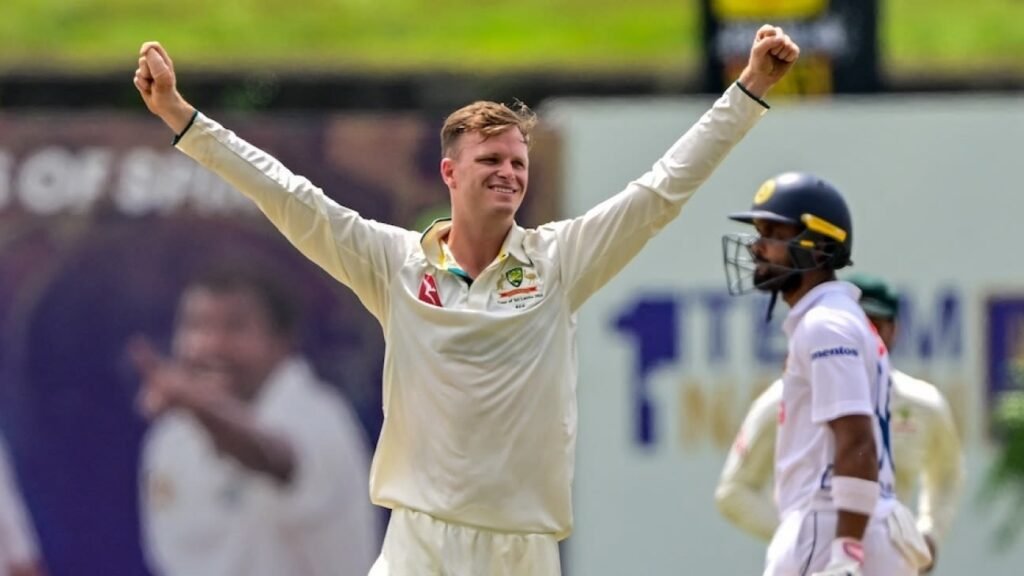“The wicket was very good last time. I’m hoping it will turn more in this match.”
Partly, this is down to bright conditions in the lead-up. Where the days before the first Test had been beset by rain, this pitch has more or less baked in ferocious heat since the first match ended, on Saturday.
There is also the theory that producing pitches that only break up after days three and four offers too substantial an advantage to the side batting first. Sri Lanka want to avoid conceding another score in the realm of 654 for 6 declared, which deflated them in the first Test. They are seeking an advantage and have fallen back to what they tend to rely on in Galle: big turn.
The problem for Sri Lanka is that Australia have learned to thrive in spinning conditions as well. Their bowlers might have had the better bowling conditions in the first Test, but they made the unusual move of strapping three frontline spinners to the plow, and between them, Nathan Lyon, Matthew Kuhnemann and Todd Murphy shared 17 wickets, dismissing Sri Lanka for 165 and 247.
“For guys that play IPL and things like that, and you can get nets there that can be extreme, you just learn on the go through those experiences. It’s almost been attack before defence and thinking proactively”
Steven Smith
“Looks a very dry surface and I dare say it will take a reasonable amount of spin,” Smith said. “In these conditions, it’s great to have more than two options of guys who can take wickets and build pressure. If you look at India, who have done it so well, they’ve had R Ashwin and Ravindra Jadeja, and either Kuldeep Yadav or Jayant Yadav or Axar Patel – someone who bowls good spin – with them in their line-up.
“In these conditions, it’s tiring for a spinner as well. It’s hot and humid out there, and you can get tired bowling spin as well as pace. If a batter looks comfortable against a bowler, you can take that bowler off and get someone else in. Even if a new bowler takes a wicket early in the spell, you can go back to the other guy, which is what India have done so well for a number of years. I just have a similar philosophy. “
Australia’s batting against spin has also improved substantially, particularly since the 2016 tour of Sri Lanka, which they lost 3-0. Smith said many Australia batters’ exposure to big-spinning conditions – even through the T20 leagues in Asia – has helped raise their game.
“Even in one-day tours you can get similar wickets in the nets to what you get out there,” Smith said. “Last time we played in Colombo in one-dayers, the ball was ragging all over the place. For guys that play IPL and things like that, and you can get nets there that can be extreme, you just learn on the go through those experiences. It’s almost been attack before defence and thinking proactively. I thought we did that magnificently in the first Test.”
Because of how enormous the winning margin was in the first Test – an innings and 242 runs – Sri Lanka now find themselves having to prove that their own batting in spinning conditions is up to scratch. And that their own bowlers can be penetrative in helpful conditions. Early signs are that this game could be a classic low-scoring Galle shootout.
“In the first Test, a lot of our batters got starts but didn’t carry on,” de Silva said. “During the match and afterwards, what we’d talked about was that someone has to make 150 or 200, because then others can bat around him, and we can get to a big score. That’s what Australia did. I’m expecting that will happen for us in this match.”
Andrew Fidel Fernando is a senior writer at ESPNcricinfo. @afidelf

